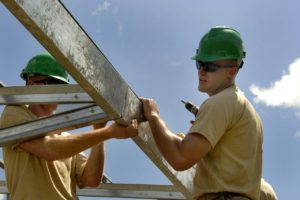
The HSE describe small builders as those smaller companies or individuals who will usually carry out construction work on:
Domestic projects
Involving extensions, repairs and refurbishment work on the homes of domestic clients and will usually have the sole responsibility for site health and safety on these projects.
Small commercial projects
Involving short duration repairs and refurbishment work (with 15 or fewer people on site) for business commercial clients where site health and safety responsibilities are shared between the small builder and the commercial client.
Experience indicates that these Small builders are those at most risk of injury and ill health on construction sites and suffer the majority of construction fatal accidents each year. Most deaths involve falls from height including: ladders, scaffolds, working platforms, roof edges, and falls through fragile roofs or roof lights. It is therefore essential that using their construction experience, that these builders carry out work in a way that ensures their own health and safety and that of others, whether they be working on the project, clients or members of the public.
When do a small builder’s health and safety duties start?
The duties start as soon you are appointed by the client to carry out the construction work. Details of any planning must be recorded as a construction phase plan. As the HSE state the effort devoted to planning should be proportionate to the complexity of the project and the risks involved.
Competence
A small builder must be able to show that they have the skills, knowledge, experience and, where an organisation, the organisational capability to carry out the work safely and without risk to health.
Also when you appoint any person to carry out any construction work you should ensure the person is competent (has the skills, knowledge, experience and training) to carry out the work. Make sure you have a record of this competence before anyone starts work.
The required level of skills, knowledge and experience (and training where required) should be proportionate to the complexity of the work and the range and nature of the risks involved.
How can you demonstrate this competence?
Examples of demonstrating skills, knowledge and experience (and training where required) might include:
- Records of continuing professional development (CPD) including training records
- Membership of professional bodies
- References from previous construction work.
Examples of demonstrating how the company may be competent to undertake the work may include:
- Using pre-qualification assessment services from third party assessors.
- Self-assessing using the standard health and safety pre-qualification questions in Publicly Available Specification PAS 91